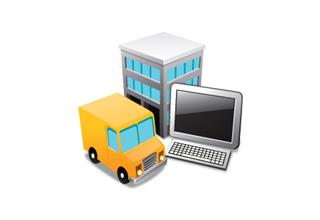
You can claim capital cost allowance (CCA) on depreciable assets to deduct your business income or rental income. Those depreciable assets include buildings, vehicles, furniture and equipments, that you use in your business. Those assets usually wear out several years, so you can’t deduct all their cost in one single year. Instead, you should claim capital cost allowance based on their capital cost and capital cost allowance rates.
1. Calculate the capital cost
Capital cost is the amount on which you first claim capital cost allowance. The capital cost of a property is usually the total of:
- the purchase price (not including the cost of land, which is not depreciable);
- the part of your legal, accounting, engineering, installation, and other fees that relates to buying or constructing the property (not including the part that applies to land);
- the cost of any additions or improvements you made to the property after you acquired it, if you did not claim these costs as a current expense (such as modifications to accommodate persons with disabilities); and
- for a building, soft costs (such as interest, legal and accounting fees, and property taxes) related to the period you are constructing, renovating, or altering the building, if these expenses have not been deducted as current expenses.
2. Understand Capital Cost Allowance (CCA)
Capital cost allowance (CCA) is the deduction you can claim over several years for the cost of depreciable property, which wears out or becomes obsolete over time such as a building, furniture, vehicle, or equipment, that you use in your business.
3. Special rules to claim capital cost allowance
Generally, you should use the declining balance method to claim capital cost allowance. This means that you claim CCA on the capital cost of the property minus the CCA you claimed in previous years, if any. The balance declines over the years as you claim CCA.
Example
Last year, Sue bought a machine for $60,000 to use in her business. On her income tax return for last year, she claimed CCA of $1,200 on the machine. This year, Sue has to base her CCA claim on the balance of $58,800 ($60,000 – $1,200).
- You do not have to claim the maximum amount of CCA in any given year. You can claim any amount you like, from zero to the maximum allowed for the year.For example, if you do not have to pay income tax for the year, you may not want to claim capital cost allowance. This is because Claiming CCA reduces the CCA available for future years.
- In the year you acquire a property you can usually claim CCA only on one-half of the cost. This is called the half-year rule.
- You cannot claim capital cost allowance on most land or on living things such as trees, shrubs, or animals. However, you can claim CCA on timber limits, cutting rights, and wood assets.
- If you claim CCA and you later dispose of the property, you may have to add an amount to your income as a recapture of CCA. Or, you may be able to deduct an additional amount from your income as a terminal loss.
- If your fiscal period is less than 365 days, you have to prorate your CCA claim. For example, if you start a business in June 1, 2013, your fiscal period is 214 days. Suppose you calculate your CCA to be $3,500. The amount of CCA you can claim is $2,052 ($3,500 × 214/365).
